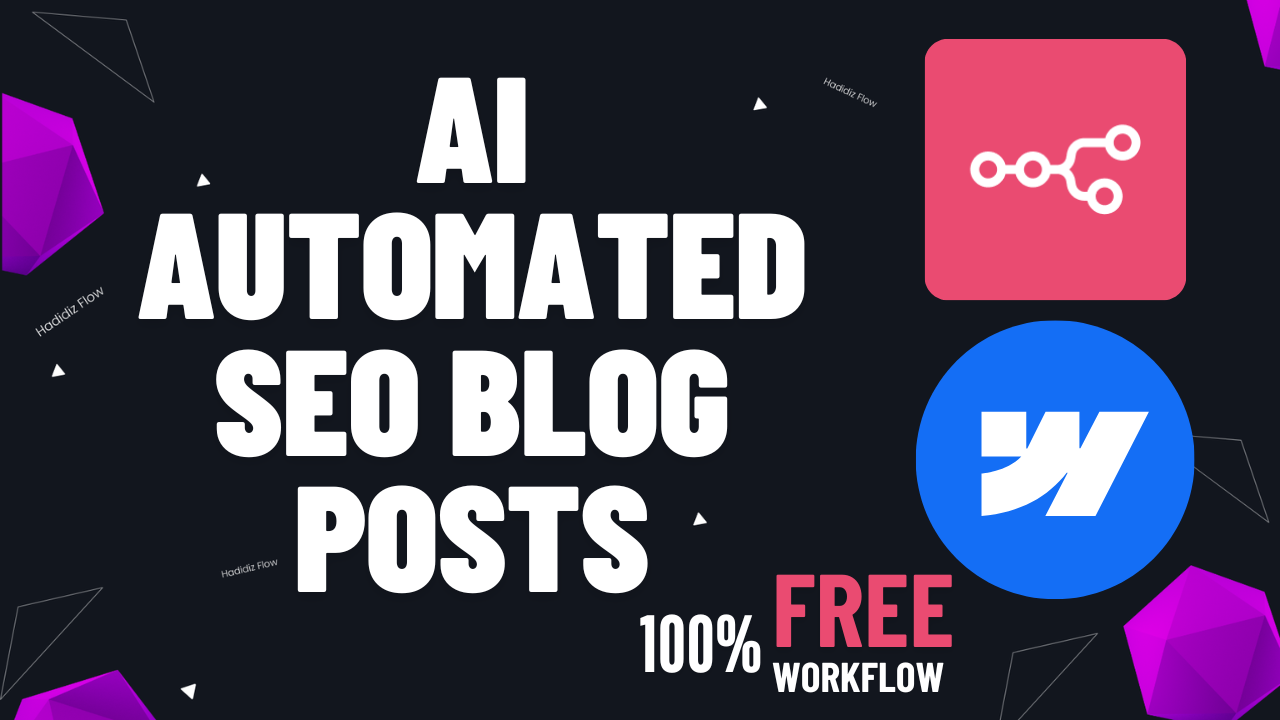By Hadidiz Flow Team •
January 18, 2024
• AI
AI Automation: Transforming Business Operations in 2024
Artificial Intelligence automation is no longer a futuristic concept—it's a present-day reality that's transforming how businesses operate. From small startups to large enterprises, organizations are leveraging AI to streamline processes, reduce costs, and achieve unprecedented levels of efficiency.
The Current State of AI Automation
Market Growth
The AI automation market has experienced explosive growth:
- 2023 Market Size: $15.8 billion
- Projected 2028 Size: $35.5 billion
- Annual Growth Rate: 17.5%
Key Adoption Areas
- Customer Service: Chatbots and virtual assistants
- Data Processing: Automated analysis and reporting
- Marketing: Personalized campaigns and lead scoring
- Operations: Supply chain optimization and predictive maintenance
Benefits of AI Automation
1. Cost Reduction
- Labor Costs: Reduce repetitive task overhead by 40-60%
- Error Reduction: Minimize costly human errors
- Resource Optimization: Better allocation of human resources
2. Improved Efficiency
- 24/7 Operations: AI systems work continuously
- Faster Processing: Handle large volumes of data instantly
- Consistent Quality: Standardized outputs without variation
3. Enhanced Decision Making
- Data-Driven Insights: Process vast amounts of information
- Predictive Analytics: Forecast trends and behaviors
- Real-Time Analysis: Make informed decisions quickly
Implementation Strategies
Start Small, Scale Fast
Begin with pilot projects in specific departments:
Phase 1: Assessment (Weeks 1-2)
- Identify repetitive tasks
- Evaluate current pain points
- Set measurable goals
Phase 2: Pilot Implementation (Weeks 3-8)
- Choose low-risk, high-impact processes
- Implement basic automation tools
- Monitor and measure results
Phase 3: Scale and Optimize (Months 3-6)
- Expand successful automations
- Integrate systems across departments
- Continuously optimize workflows
Real-World Applications
Customer Support Automation
Before AI:
- Average response time: 4 hours
- Resolution rate: 65%
- Customer satisfaction: 72%
After AI Implementation:
- Average response time: 30 seconds
- Resolution rate: 85%
- Customer satisfaction: 89%
Sales Process Automation
- Lead Scoring: Automatically prioritize prospects
- Follow-up Sequences: Personalized email campaigns
- Pipeline Management: Real-time sales forecasting
Choosing the Right Tools
Popular AI Automation Platforms
- Zapier: Great for simple workflow automation
- Microsoft Power Automate: Enterprise-grade solutions
- UiPath: Advanced RPA capabilities
- N8N: Open-source workflow automation
Evaluation Criteria
- Ease of Use: How quickly can your team adopt it?
- Integration Capabilities: Does it work with existing tools?
- Scalability: Can it grow with your business?
- Cost: What's the ROI timeline?
Common Challenges and Solutions
Challenge 1: Employee Resistance
Solution: Focus on augmentation, not replacement
- Communicate benefits clearly
- Provide adequate training
- Show how AI enhances their roles
Challenge 2: Data Quality Issues
Solution: Implement data governance
- Clean existing data before automation
- Establish data quality standards
- Regular monitoring and maintenance
Challenge 3: Integration Complexity
Solution: Phased approach
- Start with standalone solutions
- Gradually integrate systems
- Use APIs and middleware
Measuring Success
Key Performance Indicators (KPIs)
- Time Savings: Hours saved per week/month
- Cost Reduction: Percentage decrease in operational costs
- Accuracy Improvement: Error rate reduction
- Customer Satisfaction: NPS and CSAT scores
- Employee Productivity: Output per employee
Future Trends
What's Coming Next
- Generative AI Integration: ChatGPT-like capabilities in business processes
- No-Code AI: Democratizing AI development
- Edge AI: Processing at the source for faster responses
- Ethical AI: Focus on responsible automation
Getting Started Today
Immediate Actions You Can Take
- Audit Current Processes: Identify automation opportunities
- Research Tools: Evaluate platforms that fit your needs
- Start a Pilot: Choose one process to automate
- Measure Results: Track improvements and ROI
- Plan Expansion: Develop a roadmap for scaling
Conclusion
AI automation is not just about technology—it's about transforming your business for the future. The companies that embrace automation today will have a significant competitive advantage tomorrow.
The question isn't whether you should implement AI automation, but how quickly you can start. Begin your journey today and unlock the full potential of your business operations.
Ready to implement AI automation in your business? Contact Hadidiz Flow for a free consultation and customized automation strategy.





